Adding Car Spoilers and Wings
"If you like it you should put a Wing on it."
Let's have a look at wings and spoilers, answer some of the common questions we get about aerodynamics and tuning the air flow around cars.
Are spoilers and wings good upgrades for your car? Do you need front wings and front spoilers?
What are Vortex generators, how do these work, and what benefits do you get from fitting one?
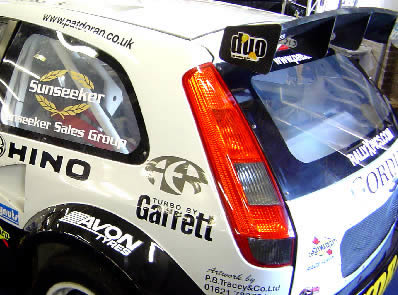
How do spoilers work? Firstly we need to explain the difference between a spoiler and a wing.
Spoilers are generally closer to the body of the car and help diffuse the air reducing drag.
Wings are mounted much higher up and have an aerodynamic effect of creating downforce.
We have a video on our new channel which covers aero improvements and explains the difference between wings, spoilers and vortex generators.
What is drag?
Let's look first of all at Drag and the benefits of spoilers.
The faster a car goes the more it has to push through the air. Walking through water gives an idea of this concept and the faster you go the harder it is.

As air flows around the car there is a low pressure area forming behind the car which drags on the car. The front of the car has to push through the air so a driver will aim to reduce these pressure extremes and help the car slip through the air.
Wings work like an upside down airplane wing. So how does an airplane wing work then? Torquecars now take a complex subject and simplify it.
Drag = drag coefficient (cd) x density x velocity² / 2 x reference area.
(cd is often quoted by car makers, and it requires quite complex calculations. A Volvo V50 or Mk V Golf GTi has a cd of 0.32 a Ford Mustang from 79 measured 0.44 and an F1 car clocks in at around 0.7 to 1.1.
The lower this figure the better, unless you want lots of down force, and this comes at the expense of a higher drag coefficient so this is why the F1 car clocks in so high but without that downforce it would not be able to corner so well.
Most modern cars hover around 0.24 to 0.3 and a low drag coefficient means the car will be more economical to drive and will have to work less hard to maintain high speeds.
So the faster the car goes the higher the amount of drag, velocity is very much part of the equation.
A spoiler does exactly that, it spoils the airflow reducing this low pressure void behind the car.
Vortex Generators
These are little triangles in a row fitted to the roof of a car. They establish mini wing tip vortices that cause air to spiral. This spiral action causes the air in the low and high pressure regions to mix and it reduces the drag on the car.
This pushes down the boundary layer and keeps the fast flowing air near the cars surface.
By combining this with a spoiler, the closer airflow to the car is the more effective the rear spoiler will be see diagram below.

(Obviously there are many, many complex factors to take into account but we are dealing with the basic principles of wing and spoiler design here and discussing whether it has a beneficial effect on a road cars performance).
Vortex Generators and roof spoilers can be setup to channel air to the rear wing/spoiler.
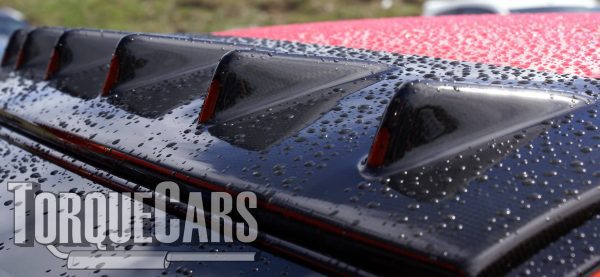
So what do Wings Do?
They create downforce by splitting the air stream into a fast stream below the wing and slow stream above it. This fast stream of air creates downforce.
This is way too simple an explanation so let's discuss wing theory and aerodynamics, but we will still keep this very complex subject as accessible as possible.
How do wings work?
In its simplest form fast moving air creates pull if the other side of an object is subject to slower moving air (the boundary layer is the region where these two streams of air join).
To test this theory take 2 sheets of paper and hold them between your thumbs and little fingers so there is a gap between the sheets of about 1 inch.
Then blow between the 2 sheets and you will notice that they pull together, which is not actually what you expect to happen.
The fast moving air creates a low pressure region between the paper causes them to pull together.
So to create lift or down force you need air moving faster on one side of the aerofoil than on the other creating a pull towards the fast moving air stream.
Obviously on a car you will not want a airplane wing so we use a simple 2 deck deflection to create the down force required.
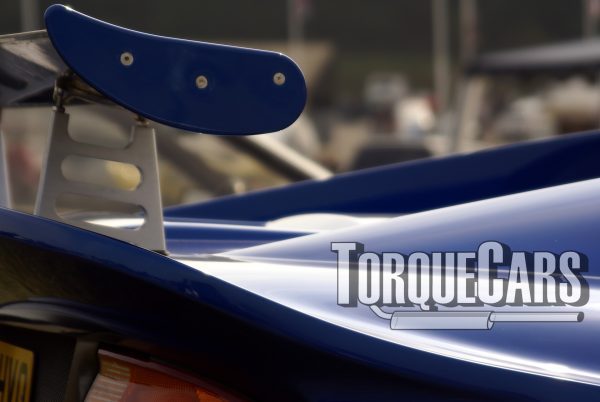
The angle of attack or deflection will have a bearing on the amount of down force generated, the larger the angle the more down force but the price you will pay is increased drag.
Most wings have a two angled surface creating a two stage deflection forcing the air over the wing to take a shorter route than the air going under the spoiler.
Thinking about the principle of spoilers and wing design ie: making the air travel further on one side than on the other, either by increasing the surface area on one side making the air travel further or by creating drag underneath to slow up the air.
What is wrong with a cars shape?
This brings us to look at the whole car and its effect on down force/lift.
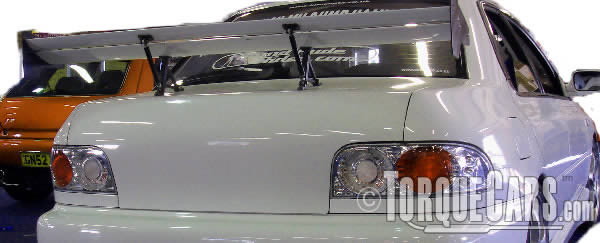
If you look at the typical shape of a car the air will travel further and faster over the top of the car than it does underneath, this creates lift. Opening a sunroof at speed can make this problem even worse.

So, an unmodified car, travelling at track speeds becomes very unstable and dangerous effectively losing grip, traction and control.
Cue the Coanda effect (a flow of liquid or air will follow the surface it is running over, try putting the side of a cup under a steady trickle of water and see what happens to the flow after it leaves the curve of the cup!)
So once deflected the stream of air will continue on the deflected course after the end of the spoiler.
Already we start to realise that just sticking a spoiler on the back of the car is not addressing the whole issue of aerodynamics.
The need for Front Spoilers/Wings
If you imagine the car as a see-saw when you press down on the rear the front will lift slightly.
When you fit a spoiler to the rear you have to expect that at higher speeds the front of the car will become lighter.
In a front wheel drive car this is very undesirable, in a rear wheel drive car you still need the front wheels to steer so although traction is improved a degree of lift at the front is undesirable.
To counter the front lift you can fit front splitters, and front and rear skirts, which create down force at the front of the car and control the amount of air rushing under the car to create down force.
Another aim of front splitters, and even bonnet vents/spoilers is to direct the airflow to another area or focus it where it can be beneficial. For example one could use a small splitter to direct air to a front intake or to cool the brake disks.
Is there a trade off from having this downforce increasing?
When you start redirecting the air rushing over the car you will create an amount of drag which will rob you of speed and economy so there is a fine line between an efficient spoiler and wing design and an inefficient one.
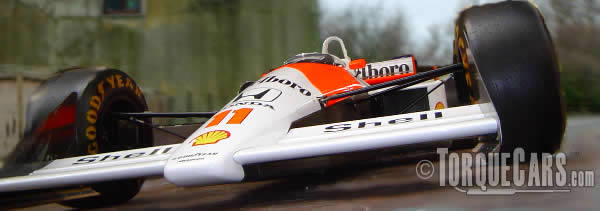
Sometimes in Formula 1 and other motorsports you will have noticed spectacular crashes where the car has lifted due to a bump and the spoilers have effectively helped the car to get airborne and crash.
Some cars generate more down force than they weigh creating the possibility of driving upside down on the roof of a tunnel (aside from the logistics of how you get it there in the first place.)
Choosing a good performance wing for your car
The best wings are adjustable, allowing the driver to set his preferences to the track conditions. For example a slow track with many bends will need a different setup to a fast track with plenty of straights.
Generally speaking a wing will create downforce but you'll also get more drag, that is the trade off. Design and angle can mitigate this allowing you to find a setting that is optimal.

The key is to get the air flowing UNDER the spoiler so downforce is created, if the wing is too low and not below the boundary layer you will not generate any downforce.
They also are mounted high up on the rear so they have an effect on the air flowing over the car. Vertical slats in the spoiler help to increase a cars straight line stability, something you see in motorsports spoilers.
For the best effect TorqueCars recommend that you do not just go out to the "boy racers supply shop" and order a spoiler with pretty stickers.
Instead go to a proper motorsports tuner and get a rear wing specked up to your car and your requirements. A single rear spoiler is a pointless addition as a performance enhancement as you need to address the nose of the car, get some suitable sills and have the underneath of the car designed to create down force as well.
Wings can start to provide measurable down force at speeds of around 50mph but it's not until about 70mph that this becomes significant and offers a benefit to the handling of a car. Spoilers can help to reduce drag on a car but are little more than cosmetic add ons.
Other body parts that help with aerodynamics
Side skirts and sills help to cause the air moving under the car to move faster creating down force and enhancing cornering stability.
So to summarise, a spoiler is, as the name suggests, designed to spoil the air flow. A car, due to its wing-like shape (the air has further to travel over the top than underneath just like a wing) tends to create lift at the rear end so a spoiler is employed to break or 'spoil' the flow, thereby reducing the lift.
A spoiler produces no downforce it just reduces lift.. A wing however, is mounted quite high and produces downforce and helps increase a cars grip and handling at speed. To discuss aerodymics and the principles of wing design in more detail, please join us in our friendly car chat forums.
Please Check out my YouTube channel, we're regularly adding new content...
PLEASE HELP: I NEED YOUR DONATIONS TO COVER THE COSTS OF RUNNING THIS SITE AND KEEP IT RUNNING. I do not charge you to access this website and it saves most TorqueCars readers $100's each year - but we are NON PROFIT and not even covering our costs. To keep us running PLEASE Donate here
If you liked this page please share it with your friends, drop a link to it in your favourite forum or use the bookmarking options to save it to your social media profile.
Feedback - What do You Think?
Please use our forums if you wish to ask a tuning question, and please note we do not sell parts or services, we are just an online magazine.
Help us improve, leave a suggestion or tip
Please watch this video and subscribe to my YouTube channel.

 Click to accept YouTube Cookies & Play.
Click to accept YouTube Cookies & Play.